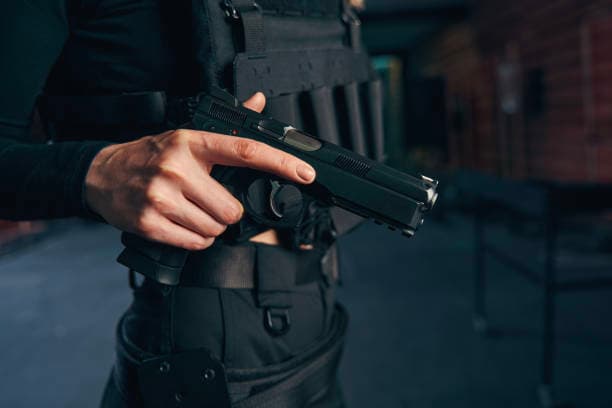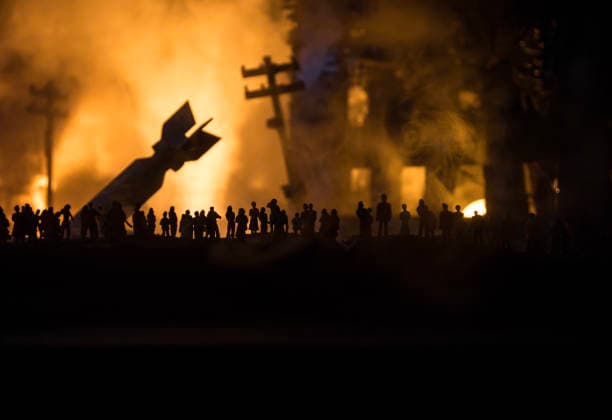
Throughout history, wars have seen a continuous drive to create better weapons. We’ve gone from using swords and spears to having tanks and missiles today. The way weapons have changed over time is really impressive. But some really strange weapons have had their moments in battle. In this article, we’ll take a closer look at these unusual tools of destruction. Those inventions among other things show how creative people can get when it comes to fighting.
The Puckle Gun (1718)
Before we modern machine gun, there was something called the Puckle Gun, and it’s quite a curious invention. It was created by a guy named James Puckle back in 1718. This gun was special because it could shoot in different ways. It could fire round bullets at Christian enemies and square bullets at Muslim enemies, which is pretty strange and reflects the biases of that time. However, not many people ended up using the Puckle Gun, and it stayed more like a historical oddity.
The Bat Bomb (World War II)
During World War II, there was a pretty unusual idea the bat bomb. A dentist named Lytle S. Adams worked on it. The plan was to attach little fire bombs to bats. These bats would then fly into enemy buildings, and when the bombs went off, they would cause fires.He actually tested the bat bomb, and it worked to some extent, but it never got used in real combat because of the atomic bomb project, which was a bigger priority. The bat bomb project was considered too weird, so they gave up on it. But it’s still a pretty unique and strange part of wartime history.
The Chauchat-Ribeyrolles Submachine Gun (1918)
In the last years of World War I, the French army came up with something called the Chauchat-Ribeyrolles 1918 Submachine Gun. It did not look unusual but the bullets it used were quite uncommon. Instead of regular bullets, it shot 8mm Lebel cartridges with a 9mm armour-piercing tungsten tip. This gave it pretty good penetration power, but the war ended before it could be used widely. The Chauchat-Ribeyrolles 1918 was one of the early attempts to use armour-piercing bullets, which would later become a real thing in modern warfare.
The Tsar Tank (1915)
During World War I, there was this really big and strange tank called the Tsar Tank. It was made by a Russian engineer named Nikolai Lebedenko. It had two gigantic front wheels and one small back wheel, and the crew sat in a cabin hanging between the front wheels. But here’s the thing, it didn’t work well at all. During its tests, it got stuck and was too easy for enemies to attack. The Tsar Tank shows that sometimes when you try really different and unusual designs, they can end up being not very practical or easy to use.
The Great Panjandrum (World War II)
When countries are in the middle of a war, they sometimes come up with really strange weapons, like the Great Panjandrum. This odd thing was made by the British during World War II. It had two big wheels with rockets and a drum filled with explosives in the middle. The plan was to roll it onto enemy beaches and make it blow up to clear obstacles. But the problem was that it didn’t roll straight, so it ended up being more of a danger to its British army than to its enemy. The Great Panjandrum’s is famous as one of the weirdest weapons in history.

The Stinger (Cold War)
In the time of the Cold War, the United States had a pretty strange idea called “Project Pigeon.” They wanted to teach pigeons to help missiles find their targets. The pigeons would be inside the missile and peck at pictures of the target on a screen. This pecking would change the missile’s path. Luckily, they decided to use more reliable methods instead of this weird one. Even though Project Pigeon sounds really odd, it shows how people were trying all sorts of creative things during the Cold War to make new technology.
The Whistling Dixie (American Civil War)
In the time of the American Civil War, the Confederacy had a pretty unique artillery piece called the “Whistling Dixie.” This cannon had a special design at the front that made a spooky whistling noise when the shell flew through the air. They hoped this noise would scare the enemy soldiers, but actually, it was not effective. The Whistling Dixie is a good example of how people tried to use psychology in warfare.
Inventive Yet Impractical
Every now and then, some really strange weapons have popped up in the history of wars. They show how people can come up with unusual and sometimes not-so-practical ideas when they’re fighting. Most of these weird weapons didn’t become popular, but they give us a peek into how inventive and experimental folks were during wartime. When we look back at these odd weapons, we see that trying unusual ideas in war can lead to totally bizarre results.